DevBlog
Stylized Sumac
I'm happy to share my stylized sumacs that I have been studying for the last week. I had so much fun doing this and I wanted to document the process for my students and as well for future reference. I've been learning from Ben Cloward's YouTube, Bogodar Havrylyuk's Level Up Substance Designer foliage class and as well as Marie Lazar's article for 80LV. All of these artists are insanely talented and I am grateful for the knowledge that has been shared so generously.
I wanted to crank these trees as far I could in Unreal using all the tricks I've learned over the years so that in my next pass of the environment I can push even harder.
Here is the final render:
I broke down the steps into smaller chunks as to not get overwhelmed. The first was to study how Marie made her normal maps for her bark. This was my final result:
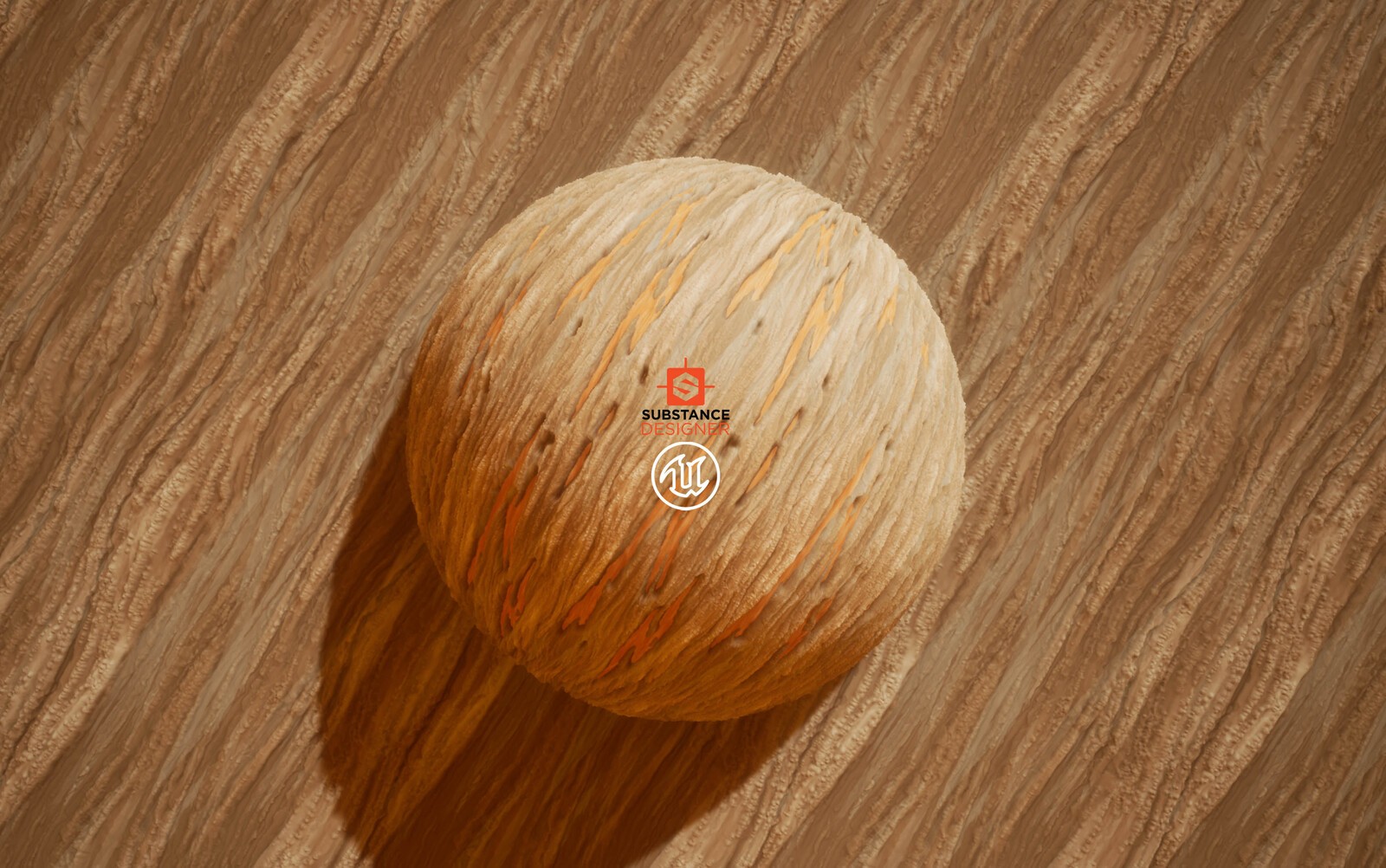
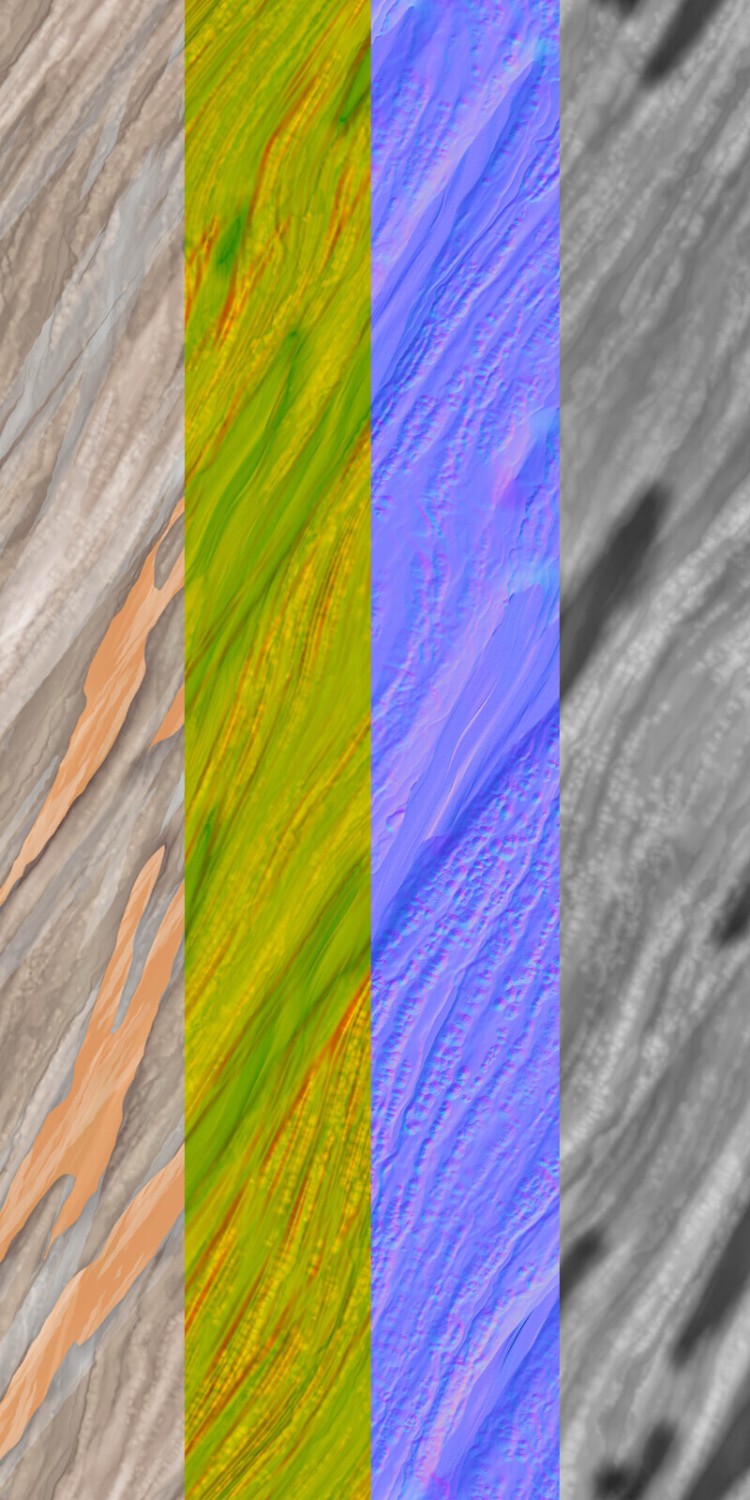
It was particularly challenging to maintain a minimalist stylized look while also going right into the microdetails.
From here I had two sets of bark materials I could use to lerp between in Unreal, one set with damage and one without. I had been shown a 2 UV system for hard surface modelling in school and wanted to adapt it for foliage on the trunks of the trees. I first created a cylinder in 3Ds Max that was UVd to tile this bark texture before moving into ZBrush for the stylized sculpt.
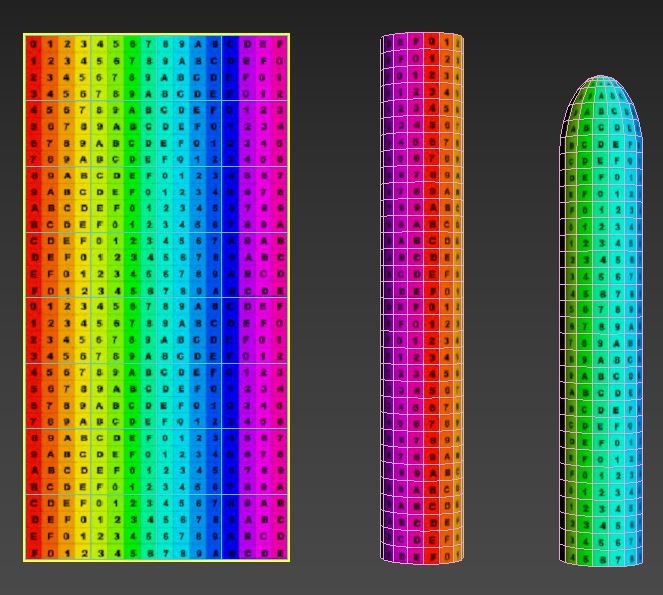
From here I laid down the foundation for the sumac I wanted to make and then sculpted in ZBrush. I wanted to stylize the surface of the bark and combine them together in Unreal with a shader later. I had the bake on channel 1 and the above UVs on channel 2. This way I could blend them together in Unreal using the BlendAngleCorrectNormals node. This is the bark model in engine:

From here I sculpted the leaves in ZBrush being careful to assure that I could use the baked masks (curvature, ambient occlusion, thickness, position) as masks in Substance Painter and then further exported to Unreal. When baking onto a plane, I made sure the get as much depth as possible to get the best quality AO map. Marie had made two, so I did as well.
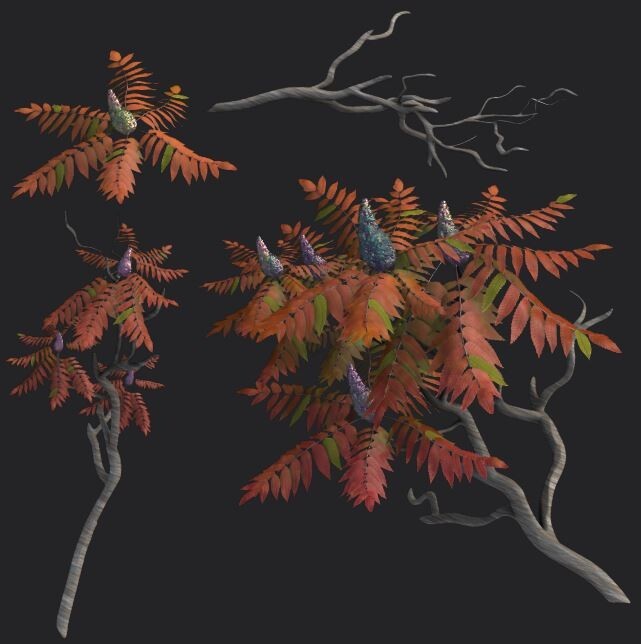
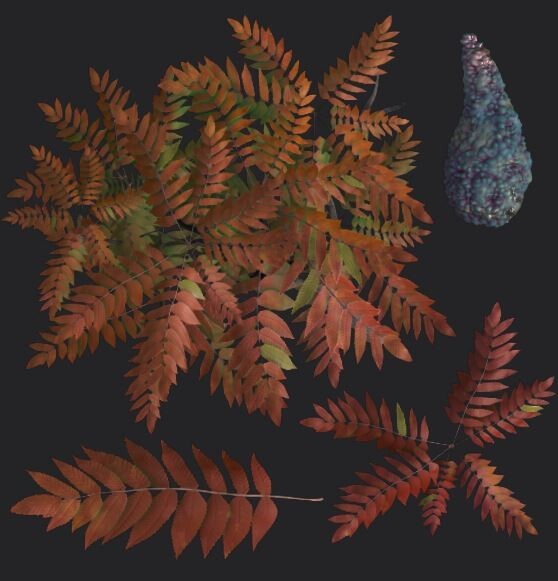
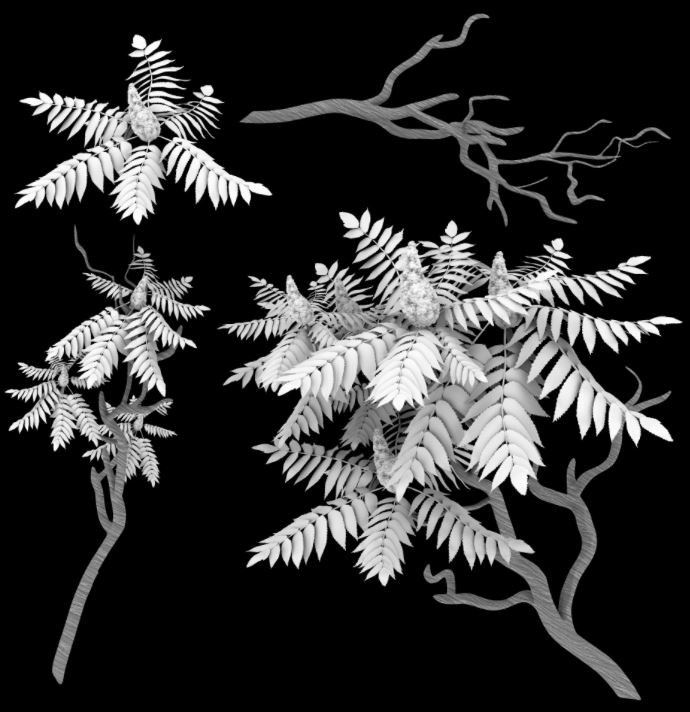
Then it was time to make the shader in Unreal. Shoutout to Ben Cloward for the awesome tutorials. The first shown is the foliage shader and the second is the bark shader.
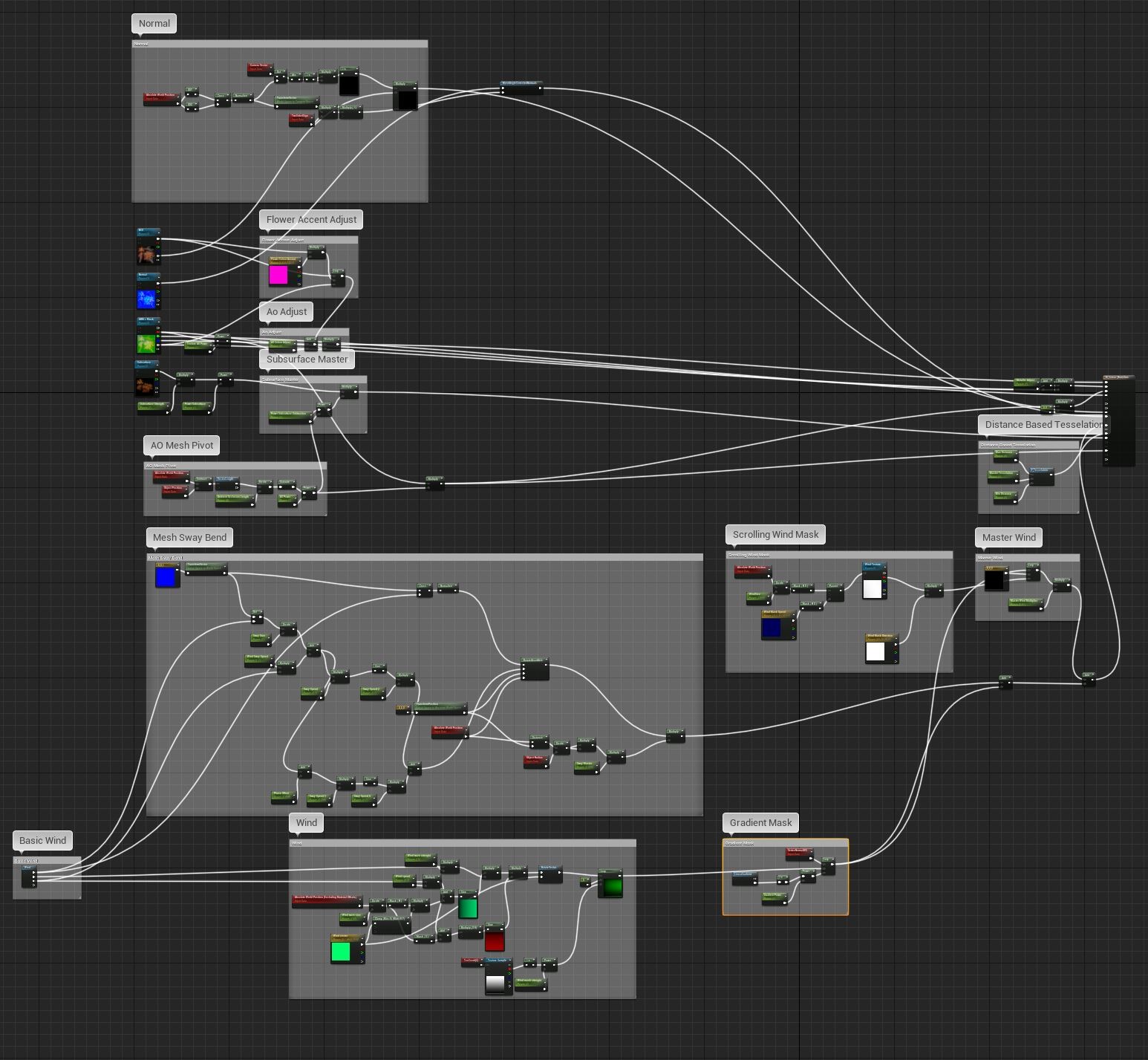
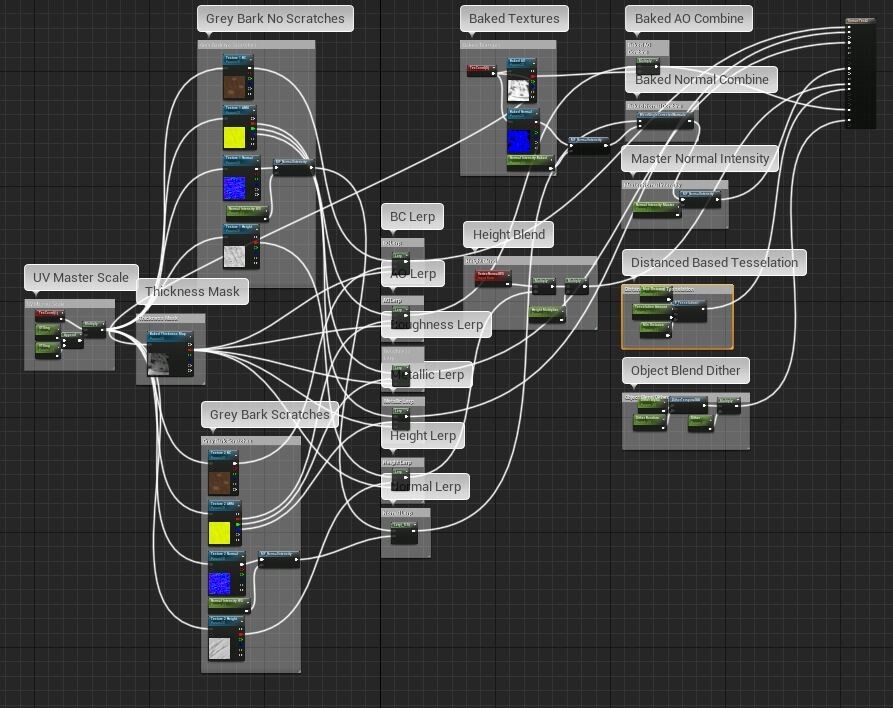
Then it was time to make the leaf particle. I wanted to go through the exercise of making the most detailed leaf I possibly could, just to see what would happen. Using Bohdan's techniques as inspiration this was my result.

From here I made a decal for the ground. Using instances of the decal I was able to stack differing colour variations to break it up a bit. What I liked was that the particle matches the decal on the ground.
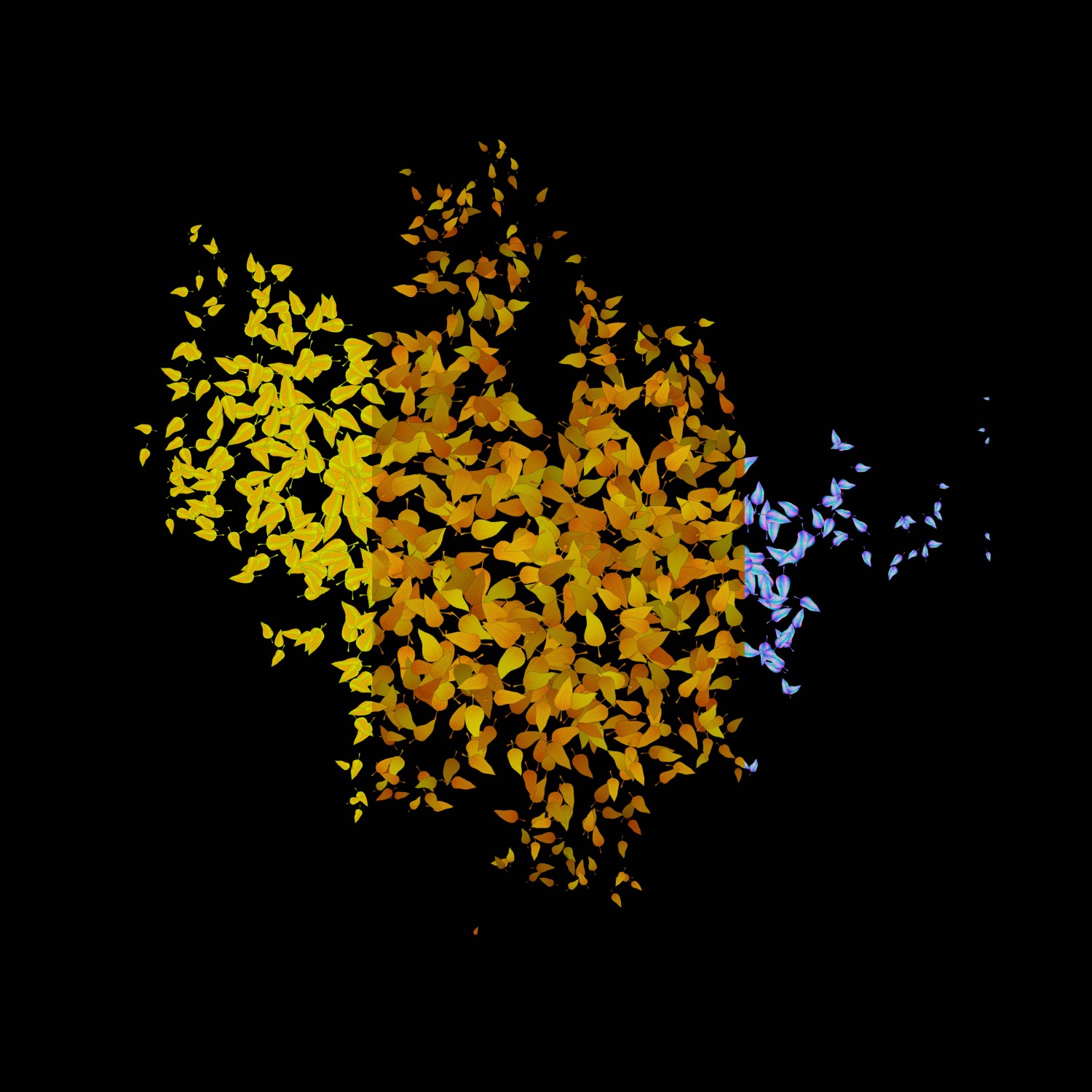
Now it was just a matter of putting it all together!
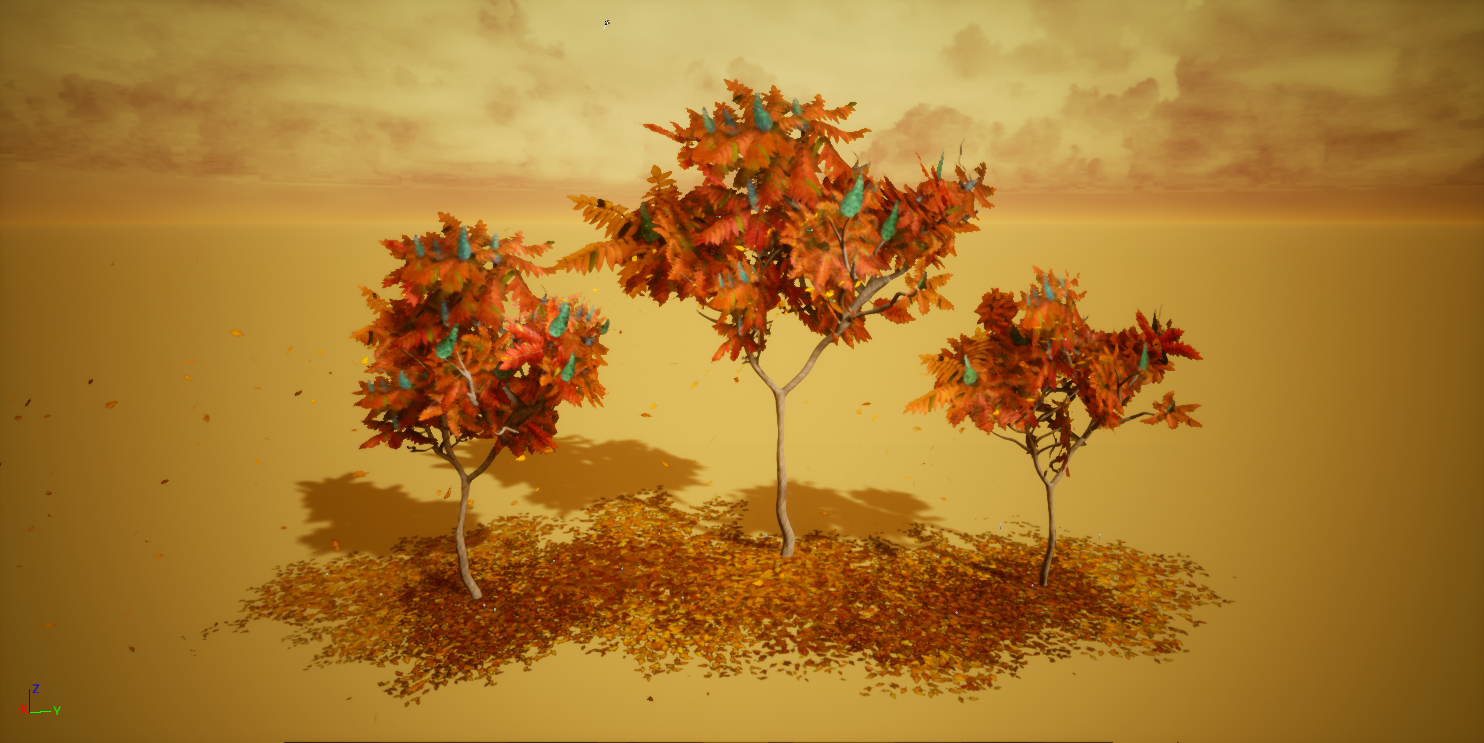
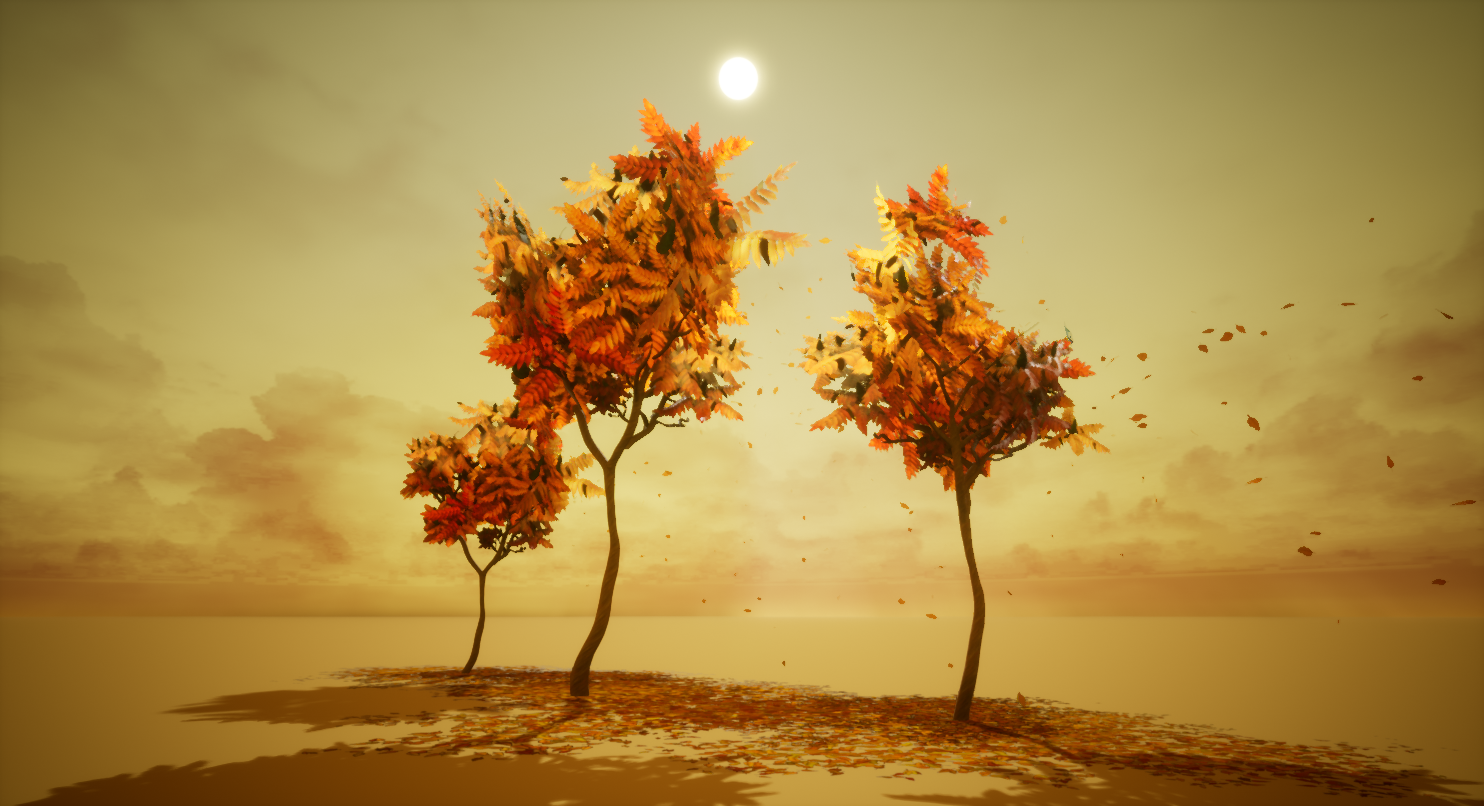
Next steps are to use this 2 UV technique for vertex painting on larger structures, exploring using masks to tile textures based on a mesh's thickness and further optimizing texture packing.
Thanks for reading and feel free to reach out if you have any questions or suggestions on how to improve!
***
Resources:
Ben Cloward
Lazar
Bogodor Havrylyuk
David Pynkoski